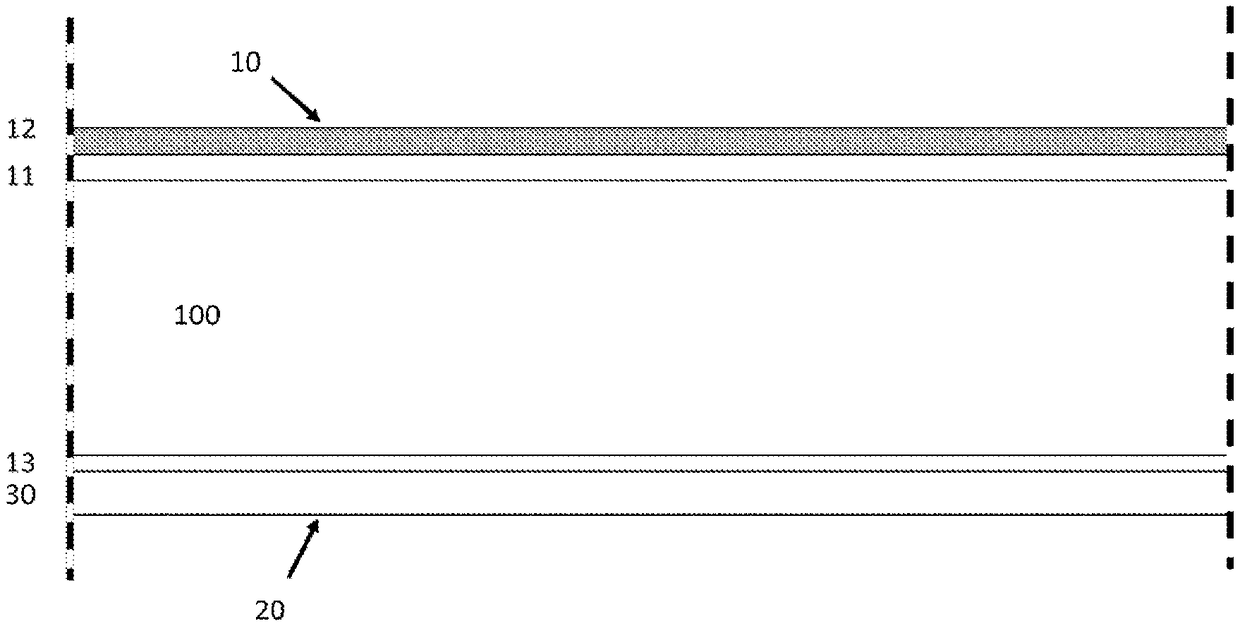Method of manufacturing of a solar cell and solar cell thus obtained
A technology for solar cells, tunnel dielectrics, used in final product manufacturing, sustainable manufacturing/processing, semiconductor/solid-state device manufacturing, etc.
- Summary
- Abstract
- Description
- Claims
- Application Information
AI Technical Summary
Problems solved by technology
Method used
Image
Examples
Embodiment Construction
[0091] utensils such as Figure 1C and Figure 1D The test structure for the configuration shown in Complete Preliminary Results. A monocrystalline silicon substrate is used which is doped n-type in a manner conventional to the skilled person. More than one substrate is provided into the reaction chamber of the LPCVD apparatus. The substrate is then processed according to the invention. A tunnel dielectric with a thickness of 1.5 nm was applied by thermal oxidation. Thereafter, a multilayer stack of silicon layers and boron dopant layers is applied. The multilayer stack starts and ends with silicon layers. The total number of boron dopant layers is nine. The total thickness of the multilayer stack is about 400 nm, which is evenly distributed over the 10 polysilicon layers. The boron dopant layer is relatively thin. No protection is applied so that the multilayer stack grows in the same way on both sides of the silicon substrate. This is followed by annealing.
[0092...
PUM
| Property | Measurement | Unit |
|---|---|---|
| thickness | aaaaa | aaaaa |
| thickness | aaaaa | aaaaa |
| thickness | aaaaa | aaaaa |
Abstract
Description
Claims
Application Information
 Login to View More
Login to View More - R&D
- Intellectual Property
- Life Sciences
- Materials
- Tech Scout
- Unparalleled Data Quality
- Higher Quality Content
- 60% Fewer Hallucinations
Browse by: Latest US Patents, China's latest patents, Technical Efficacy Thesaurus, Application Domain, Technology Topic, Popular Technical Reports.
© 2025 PatSnap. All rights reserved.Legal|Privacy policy|Modern Slavery Act Transparency Statement|Sitemap|About US| Contact US: help@patsnap.com



